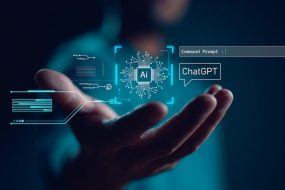
The landscape of product design is undergoing a transformative shift, with Artificial Intelligence (AI) playing an increasingly prominent role. While AI isn’t replacing designers, it’s empowering them to create better, faster, and more innovative products. This blog delves into the fascinating world of AI in product design, exploring its applications, benefits, limitations, and future potential.
How is AI Shaping Product Design?
It is impacting product design in several ways:
1. Generating Creative Ideas: It can help overcome creative blocks by generating diverse design options based on user needs, competitor analysis, and existing trends. Tools like DALL-E and Midjourney allow designers to input text descriptions and receive various visual interpretations, sparking new ideas and expanding creative possibilities.
2. Optimizing User Experience (UX): By analyzing user data and behavior patterns, It can identify areas for improvement in user interfaces and interactions. This data-driven approach helps designers create intuitive and user-friendly experiences that resonate with target audiences.
3. Personalization and Customization: It can personalize product features and interfaces based on individual user preferences and context. This allows for customized experiences that cater to diverse user needs and enhance product engagement.
4. Prototyping and Testing: It can automate the creation of low-fidelity prototypes based on design specifications. This rapid prototyping process facilitates faster iteration and testing, allowing designers to gather feedback and refine their designs more efficiently.
5. Material and Manufacturing Optimization: It can analyze vast amounts of data to identify optimal materials and manufacturing processes for specific product designs. This leads to lighter, stronger, and more sustainable products, while also optimizing production costs and efficiency.
6. Design for Accessibility: AI-powered tools can analyze product designs for potential accessibility issues, ensuring they are usable by individuals with disabilities. This promotes inclusive design and caters to a broader audience.
Benefits of Using AI in Product Design
Integrating AI into product design offers several compelling benefits:
- Increased Efficiency: It can automate repetitive tasks and streamline design workflows, freeing up designers’ time for higher-level strategic thinking and creative exploration.
- Enhanced Innovation: AI’s ability to analyze vast data sets and generate diverse design options can foster the development of more innovative and unique products.
- Improved User Experience: AI-powered user data analysis allows designers to create products that are intuitive, user-friendly, and tailored to individual needs.
- Reduced Costs: Faster design processes, optimized prototyping, and better resource allocation through AI can lead to reduced development costs and shorter time-to-market.
- Sustainability: It can enable the selection of materials and manufacturing processes that are environmentally friendly and resource-efficient.
The Current Landscape and Limitations of AI in Product Design
While It holds immense potential, it’s crucial to acknowledge its current limitations:
- Limited Creativity: While it can generate ideas, it currently lacks the human capacity for true creative thinking and emotional understanding. The “human touch” remains essential in design.
- Data Bias: AI algorithms are trained on existing data, which can perpetuate existing biases. Designers need to be aware of potential biases and actively mitigate them to ensure inclusive and fair design practices.
- Ethical Considerations: As it becomes more sophisticated, ethical considerations arise regarding data privacy, ownership, and potential job displacement. Designers and businesses need to approach AI integration with ethical responsibility and transparency.
The Future of AI in Product Design
AI is still evolving, and its impact on product design is expected to grow significantly in the coming years. Here are some potential future directions:
- AI-powered design assistants: Imagine AI as a collaborative design partner, providing real-time feedback, generating variations on existing designs, and even co-creating elements with human designers.
- Generative design: AI could become more adept at not just generating ideas but also generating entire product designs based on specific parameters and user needs.
- Augmented reality (AR) and virtual reality (VR) in design: AI could power advanced AR and VR tools that allow designers to immerse themselves in their creations and conduct user testing in simulated environments.
Conclusion: A Collaborative Future for Humans and AI
AI is not a replacement for human designers; it’s a powerful tool for augmentation and collaboration. By leveraging AI’s strengths while maintaining the human element of creativity, empathy, and ethical responsibility, the future of product design holds immense promise for innovation, efficiency, and user-centric experiences. As AI continues to evolve, embracing its potential while addressing its limitations will be crucial for designing a better future for products and the users who interact with them.











